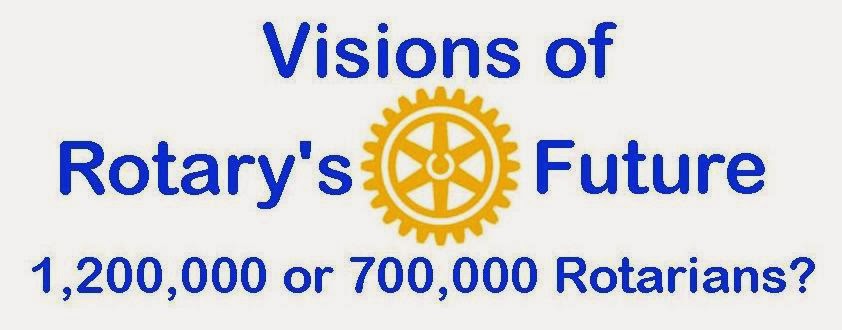In conducting research for Rotatorials, I communicate with
many Rotarians as well as past, present, and future Rotary International
(R.I.) leaders, primarily on membership
issues. One leader's vision of R.I.'s future
was, quote, "I see a future where we
have 25,000 clubs with 1.2 million members." Another's vision was, quote, "I see a future where we have 25,000
clubs with 700,000 members, all of whom are of the highest quality...where dues
are twice what they are now and members see it as a deal." I must point out that neither vision is
the official R.I. position, but they do point out a critical issue.
Both visions identify attainable results. It was interesting that both mentioned 25,000
member clubs, substantially less than the 34,000+ R.I. now has. From R.I.'s viewpoint, fewer clubs would mean less
administrative costs. The latter, with
700,000 Rotarians paying twice the dues, would mean that R.I.'s annual income would
be about 17% higher than 1.2 million members under the present dues structure.
But, in each vision, the Rotarians being
created have different psychographics, wants, and needs. The critical issue is that each visualized
result requires different strategic and marketing plans.
R.I.'s only purpose is to create Rotarians. It must identify and make public realistic
short and long range membership results it would like to achieve so everyone
can be working toward and be recognized for achieving the result. If it doesn't, by default its desired result is to follow its present membership path.
Or is this strictly a club issue?
Or is this strictly a club issue?



No comments:
Post a Comment